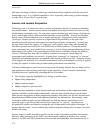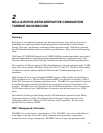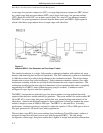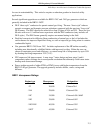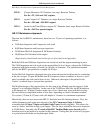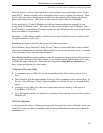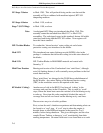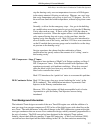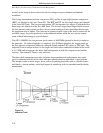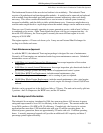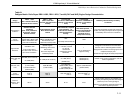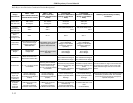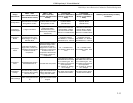
EPRI Proprietary Licensed Material
Rolls-Royce Aero-Derivative Combustion Turbine Background
2-6
I.P. Stage 5 Stator: to Mod. 1205. This will put hard facing on the vane feet and the
assembly will be re rubbered with machine injected, RTV 851
dampening medium.
I.P. Stage 6 Stator: to Mod. 1159, as above
Stage 7 (OGV Ring): to Mod. 1190, as above
Note: A redesigned OGV Ring was introduced thru Mod. 1249. This
assembly cannot be reworked from Mod 1117 or Mod 1190
assemblies. The redesigned vanes in this standard, feature full width
vane feet, hard facing and the RTV 851 rubber. New engines will
have this latest standard.
H.P. Turbine Blades: To combat the ‘shroud erosion’ extra cooling air and a better
protective coating was introduced to the blades.
Mod 1217: This introduced rear outer discharge nozzle (RODN) slots in the
package 1 combustor that delivered cooling air to the outer shroud of
the blades.
Mod 1131: H.P. Turbine Blades in MAR M002 material and coated with
Sermaloy ‘J’
Mini Flare Erosion: Burning and erosion of the Combustion Liner ‘mini flares’, although
not a life limiting feature, it will eventually cause problems to the fuel
nozzle head section.
These ‘mini flares’ are changed at the 25,000 hour refurbishment of
the 04 Module. Any minor flaking of the thermal barrier coating
(TBC) in the combustor can also be repaired at this time.
05 Module ‘Coking’: Another area of risk in the RB 211 has been oil ‘coking’ in the
scavenge and vent lines in the 05 module. This is cause by ‘crash’
stops, where the latent heat causes the residual oil in the bearing cavity
to coke up. Over time this coke completely blocked the main oil
scavenge line and oil was forced out the bearing cavity vent lines.
There are two ways to solve this problem.
First, review the unit’s shutdown experience and determining what can
be classed as a ‘cool’ stop. A ‘cool’ stop is where the engine is
brought down to idle RPM and remains at that speed for 5 to 8
minutes, before being shutdown. This gives the engine, and the close
coupled Power Turbine, a chance to ‘cool’ considerably from their
running temperature. On actual field tests it was found that on a crash



